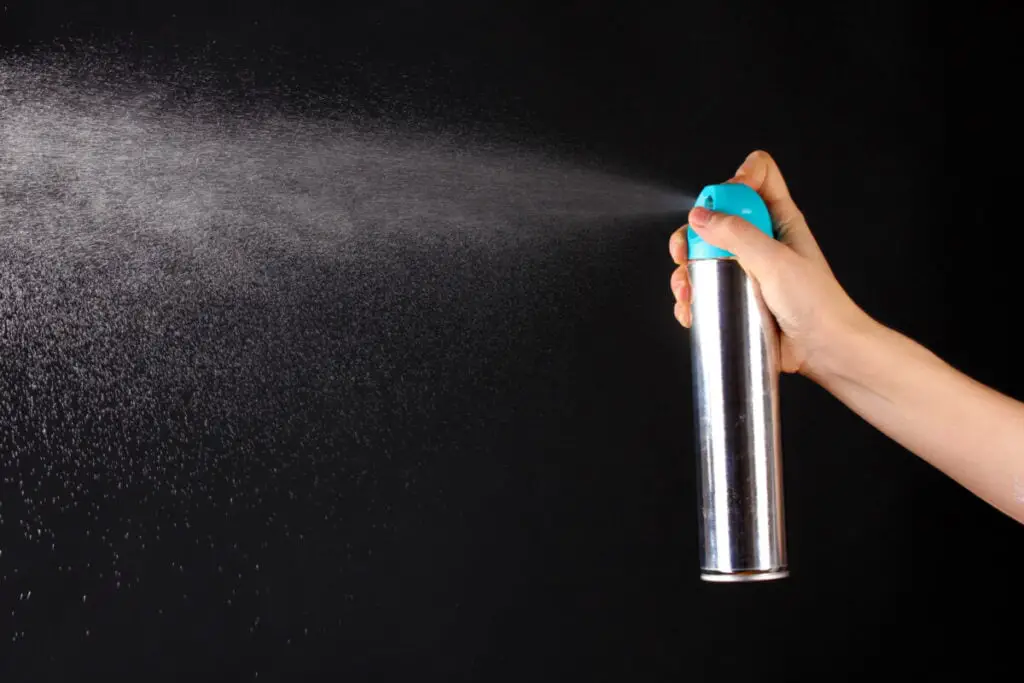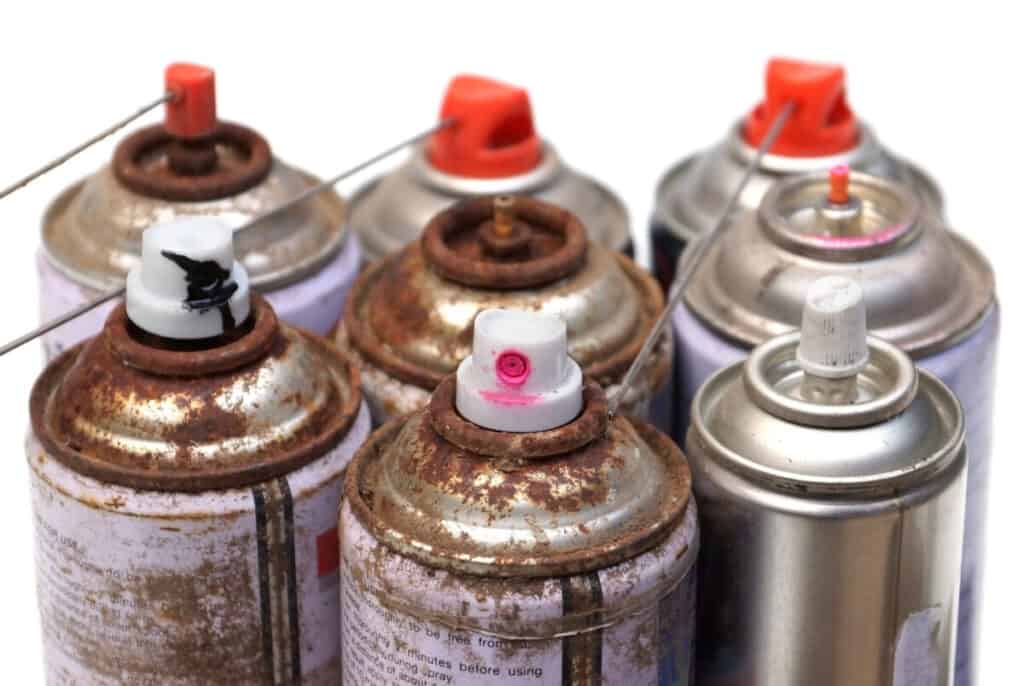
You may have been fascinated with aerosol cans as a child. Just push a button and a rush of air or spray would spring out as if by magic. As you got older you may have realized, how do I get rid of these cans once I’m done with them?
Generally, an empty can is considered safe to throw away with the rest of your garbage, but an unfinished can should be considered hazardous material and not disposed of in a garbage can. Unsafe cans should be saved until they can be provided to those with training to dispose of them.
Aerosol cans need to be disposed of properly in order to ensure your safety and others. While it might seem scary, as long as you understand how to get rid of aerosol cans you will be able to keep yourself and others safe. Keep reading for tips on what to do with aerosol cans.
Identifying How to Dispose of Your Aerosol Cans
One of the first things to check is the state of your aerosol cans. In order to process the can, we first need to understand what is done with trash once you are done with it. Trash or waste is anything that you need to dispose of. According to the Environmental Protection Agency, (EPA) in 2018 the US generated 292.4 million tons of municipal solid waste. That is equivalent to 4.9 pounds per person per day. That’s a lot of trash.
In addition to the quantity of trash we produce, not all of the waste is created equal. Some waste is considered dangerous or hazardous. According to the EPA.
EPA considers some leftover household products that can catch fire, react, or explode under certain circumstances, or that are corrosive or toxic as household hazardous waste. Products, such as paints, cleaners, oils, batteries, and pesticides can contain hazardous ingredients and require special care when you dispose of them.
EPA March 2021
Many of these materials are commonly stored in aerosol cans. However, as long as you know what to do with these cans they can be treated the same as any other form of waste. The most important thing to check is whether your aerosol can is empty. Once the can is empty it can be disposed of with other trash, or even recycled. According to EHS, a newsletter focused on environmental and health safety issues, there are several different ways that an aerosol can be considered empty.
The first way is determined by the contents. If there is less than 3% of the original weight of the contents or less than 1 inch in the can it is empty. An easy way to estimate the amount left in the can is to lightly shake the can and feel roughly how much is left. If you are trying to estimate the amount of contents still inside the can, remember that many aerosol cans have a rounded bottom and the 1-inch rule is based on the assumption the can has a flat bottom.
Another way the can could be considered empty is if the pressure inside matches the air pressure outside. In layman’s terms, if you press the trigger or button on the can and nothing comes out, the can is considered empty.
On the other hand, if your aerosol can still has product inside, it is not empty and should be treated as hazardous waste. Do not spray the product to try and empty out the can, this can lead to pollution of the air or environment around you. The can should be kept in a safe place until it can be disposed of with other hazardous waste. You may need to research how to dispose of these materials depending on where you live. Generally, your local waste collection or health agency should have a location to drop off hazardous materials.

Why is it Important to Dispose of Them Correctly
If used correctly, aerosol cans are a safe tool to keep in your home. If not used or disposed of correctly, some can quickly become dangerous. The first thing to pay attention to is what is in the can. Some contents are hazardous by themselves. These can include cleaning sprays and pesticides which should not be inhaled or may cause irritation to the skin and eyes. Removing any switches or spray tips from cans can help prevent any unwanted discharges.
Most cans will have directions on the use and disposal of these chemicals written on them. Pay particular attention to any notes about which chemicals to not mix the product with. Some chemicals can become volatile and react with one another and should not be disposed of together.
Some aerosol cans use flammable gases to pressurize the can. These gases can cause the can to explode if the temperature rises too high or the can is compressed or punctured. This isn’t a danger only to you, but to any workers who pick up or process your household trash. This is the main reason that is important to check that your can is empty (unpressurized) before disposing of them like other types of trash.
How to Use Aerosol Cans Safely
While using aerosol cans before their disposal, there are a handful of rules that you can follow to keep yourself and others safe. Always use the cans in a large well-ventilated area. Many aerosol sprays use gases like carbon dioxide or nitrogen that can suffocate you if they fill a small space without any way for the gas to clear away. This can also prevent you from being overwhelmed by fumes from noxious products. Examples of these are spray paint and some types of pungent household chemicals.
Another thing is to always be aware of the chemicals you are using. Many chemicals do not mix well with other products and can create dangerous reactions or products. A common one you might see is the reaction between bleach and ammonia. Many cleaning sprays contain either of these products and if they are mixed, create gases that can cause damage to the eyes and lungs. Always follow the directions of use on any aerosol cans, especially if you are using multiple at the same time.
Related Topics:
If you like the article above, here are some other similar articles you should check out!
Properly Disposing of a Vacuum Cleaner
